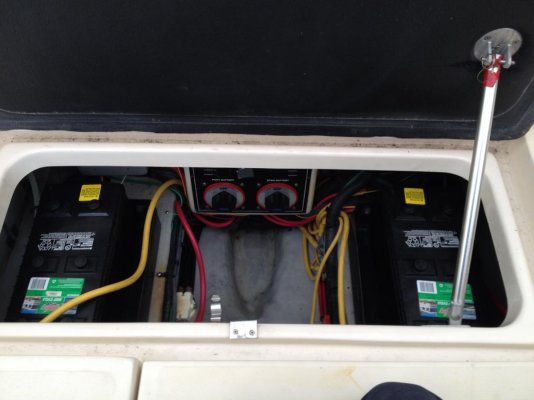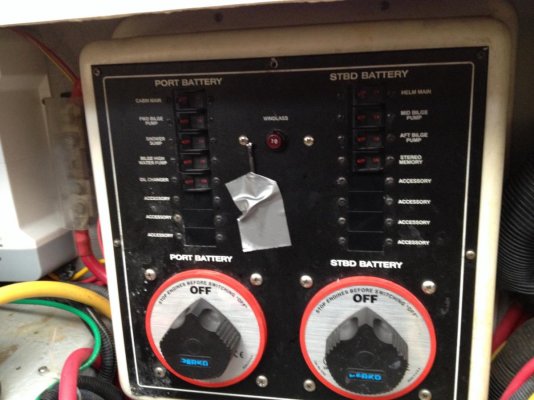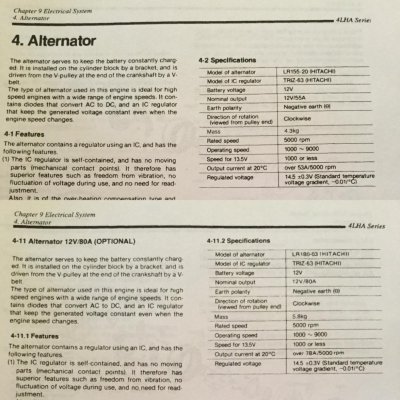kwmeyer13
Senior Member
- Joined
- Oct 30, 2014
- Messages
- 260
- Location
- USA
- Vessel Name
- Guns 'N' Hoses II
- Vessel Make
- 2004 34' Pilothouse Sedan
I realize this is a post that is electrical in nature but seeing as how I seeking a Mainship specific answer I am putting it here. I have a 2004 Mainship Pilot House Sedan with twin yanmar 240’s. I have a generator and bowthruster. My current setup is 2 4D batteries. One starts the port engine and the other starts the starboard. Port battery also feeds the cabin and also the bow thruster. The starboard battery feeds the helm main and starts the generator. I have attached 2 pictures showing the current batteries and and panel. I really do not like this set up. I would like to have a starting bank, a house bank, and generator/bowthruster bank. Do others with the factory setup like the arrangement? Has anyone modified it and if you have, how so? The main reasoning behind this thinking is wanting to spent more time “on the hook” without the chance of killing the starting batteries. I guess I could add a seperate battery just to start the generator and tie that into the battery charger since it has the capability of charging 3 banks. This would eliminate being caught with dead starting batteries by being able to just fire up the generator and putting on the battery charger till the starting battery(s) are ready. The funny thing is that the manual that I have for the boat says that “your yacht has the provision for one 12v deep cycle, heavy duty battery for each engine and a marine cranking battery for the generator.” Needless to say that part has me confused. Would anyone care to jump in and add their 2 cents?



